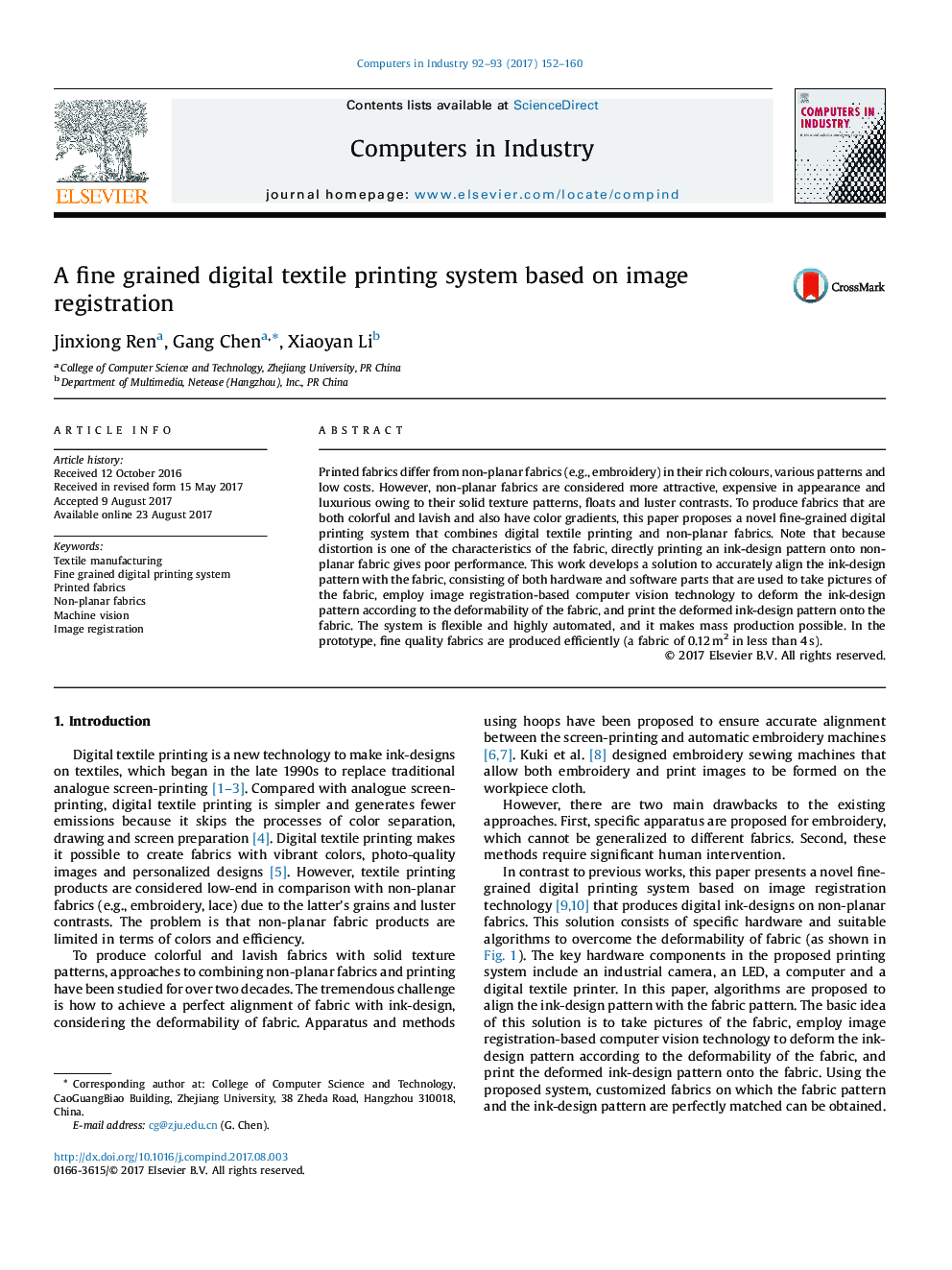| Article ID | Journal | Published Year | Pages | File Type |
|---|---|---|---|---|
| 4965501 | Computers in Industry | 2017 | 9 Pages |
Abstract
Printed fabrics differ from non-planar fabrics (e.g., embroidery) in their rich colours, various patterns and low costs. However, non-planar fabrics are considered more attractive, expensive in appearance and luxurious owing to their solid texture patterns, floats and luster contrasts. To produce fabrics that are both colorful and lavish and also have color gradients, this paper proposes a novel fine-grained digital printing system that combines digital textile printing and non-planar fabrics. Note that because distortion is one of the characteristics of the fabric, directly printing an ink-design pattern onto non-planar fabric gives poor performance. This work develops a solution to accurately align the ink-design pattern with the fabric, consisting of both hardware and software parts that are used to take pictures of the fabric, employ image registration-based computer vision technology to deform the ink-design pattern according to the deformability of the fabric, and print the deformed ink-design pattern onto the fabric. The system is flexible and highly automated, and it makes mass production possible. In the prototype, fine quality fabrics are produced efficiently (a fabric of 0.12Â m2 in less than 4Â s).
Keywords
Related Topics
Physical Sciences and Engineering
Computer Science
Computer Science Applications
Authors
Jinxiong Ren, Gang Chen, Xiaoyan Li,
